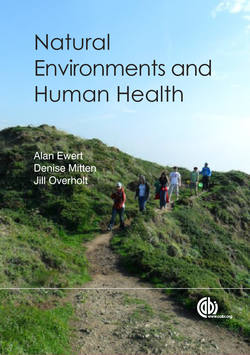Читать книгу Natural Environments and Human Health - Alan W Ewert - Страница 26
На сайте Литреса книга снята с продажи.
Industrial stage
ОглавлениеThe pursuit of power and dominance helped usher in an industrial society. In the 1700s, when global population was a tenth of its current size and the world’s resources seemed infinite, the concept of growth seemed like a road to a better life. Nature was integral to growth, providing raw materials and a platform on which to externalize manufacturing costs. Catalyzed by the invention of the first fossil-fuel power in the form of the steam engine, bringing with it unfathomable changes in the magnitude and speed of travel, the industrial age propelled people into a time of rapid change. WorldViews driving the Industrial Revolution included an economy dependent on growth and education based on the assembly model, resulting in a culture of consumption accompanied with materialism and consumerism held in esteem. Nature was an endless means to an endless end.
The belief in economic growth in the late 1700s was the catalyst for an economic revolution characterized by devotion to modern commerce and efficiency (McKibben, 2007) and dependent on consumer spending. Since World War II, growth has been integral in Western policy and aggressively exported to the world at large. The steam engine fueled growth, playing a key role in removing water from mines, transporting coal to the cities using locomotives, ships and roadways, and enhancing the manufacturing process in factories and mills. Even today, 90% of US electricity is from steam turbines.
This modern market economy does not reflect the full costs of goods and services, place any value on ecosystem services, or respect nature and basic ecological principles, resulting in a market that provides misleading information to economic decision makers. The incredible growth manifested in the US during a few short decades (100% growth in years, rather than millennia) led to a turbulent decade in the 1970s in which rivers caught fire, cities became thick with smog, and dependence on foreign oil shocked our economy (McKibben, 2007). Nature was reaching carrying capacity for many pollutants, motivating the first calls for limits to growth including E.F. Schumacher’s (2009) Small is Beautiful. These clarion calls were quickly eclipsed by the political will of the 1980s and 1990s during which economic growth once again took center stage.
During the 19th and 20th centuries education was adjusted to align with the philosophy and perceived needs of the economic market. With the Industrial Revolution came the need to train the population en masse ‘to perform as parts of machines – with precise, repetitive, mind-numbing action’ (Ackoff and Greenberg, 2008). Achieving success with the pursuit of industrialization required that children receive compulsory mass schooling intended to prepare them to be obedient parts of the new economic engine. The resulting mechanistic approach to education paralleled the increasingly mechanistic view of the world (Sterling, 2001).
In large part resulting from the above economic and educational paradigms, the dominant Western cultural narrative or WorldView has become one in which everyone could and should pursue the acquisition of material wealth as the pathway to happiness and freedom. A pervasive narrative has been created that people are separate from one another and the rest of the natural world and that the purpose of life is to primarily serve individual interests. Playing into the humans-are-separate-from-nature narrative was the fact that a transition from rural to urban environments meant that fewer people in the US lived in rural areas, therefore fewer people had nature as a large part of their everyday lives.
In summary, nature continued to be seen as the source of raw materials for growth, a commodity. Capitalist economies externalized environmental costs. Western people saw themselves as separate and above nature. Beginning in the late 1800s, a subculture of nature romanticism developed in Western cultures including authors Henry David Thoreau and John Muir. By the 1900s scientists and writers like Ellen Swallow Richards, Florence Nightingale, and Rachel Carson were expressing the importance of the interface of nature and human health, encouraging people in politics and at home to clean up the environmental pollution as well as take time to experience the beauty and awe of nature. There were people who believed it was important for children to be outside, resulting in the recreation movement to help children have safe outdoor play environments. The mechanical universe cosmological story prevailed in Western economies and was exported to as many cultures as were receptive. Many pockets of indigenous people continued their reciprocal relationship with nature; however, many were simply overrun by the industrial machine.
